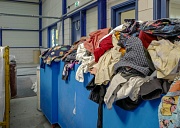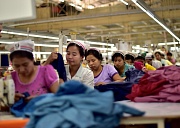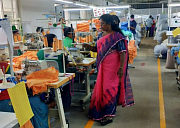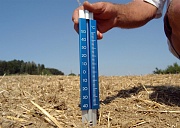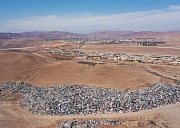Lutz Walter, secretary general of the European Technology Platform for the Future of Textiles, outlines why the claim that the fashion industry is to blame for 10% of global greenhouse gas emissions is wrong – and why this matters.
Four years after Ecotextile News debunked the myth that the textile industry was responsible for more greenhouse gas emissions than “aviation and maritime shipping combined” – a claim still parroted ad nauseum – it’s time for another critical appraisal of how much the fashion sector contributes to CO2 emissions.
The most frequent contributory figure found in policy briefs, regulatory proposals, NGO reports or consumer news outlets is that the sector is responsible for 10% of total global greenhouse gas (GHG) emissions.
Tracing this to its original source, most links or footnotes lead to a 2018 article by the United Nations Environment Programme (UNEP) entitled ‘Putting the brakes on fast fashion’. However, the English version of this webpage says: “The fashion industry produces between 2 to 8 per cent of global carbon emissions.”
The French, Spanish and Russian language versions of the exact same article say: “The fashion industry generates 2–8 % of wastewater and 10% of global carbon emissions.” Rather than something getting lost in translation, a whopping 2-8% of global GHG emissions was added to the fashion industry.
What is the true value?
Thankfully, the English text version links the source for the 2–8% claim to a 2018 report, produced by sustainability consultancy Quantis, entitled 'Measuring Fashion - Environmental Impact of the Global Apparel and Footwear Industries'.
In this study Quantis pegs the total climate impact, measured in million metric tons CO2e, of the apparel and footwear industry at 8.1% of total global GHG emissions, 6.7% for apparel and 1.4% for footwear.
The study has several significant data gaps and uncertainties which the authors acknowledge. Perhaps the biggest one is the amount of fibre production used for apparel which for the study was assumed as 84% of total textile fibre production, based on likely outdated or uncertain data from the FAO’s World Apparel Fiber Consumption Survey (2013).
Yet the relative share of total textile fibre production used for apparel is in steady decline and today is likely not much more than 50% and falling. The rest of textile fibres produced are processed into home and household textiles, technical textiles, nonwovens, and composites. This correction alone brings apparel’s share of GHG emissions from 6.7% down to 4.4%. It’s a huge difference.
Meanwhile, a study published by McKinsey and Global Fashion Agenda entitled “Fashion on Climate” pegged the fashion industry’s GHG emissions in 2018 at 2.1 million tons CO2e or 4% of the global total. This study, notoriously opaque about its assumptions and data sources, assigns 38% of total fashion industry emissions to the fibre production stage, for which no other comparable study comes anywhere close. For instance Quantis assigns only 15% to fibres and an 2023 UNEP study only 12%.
Another recent study entitled “Taking Stock of Progress Against the Roadmap to Net Zero”, published by the Apparel Impact Institute industry, estimated 897 million tonnes of CO2e in 2021, less than half of the McKinsey/GFA estimate, and representing only 1.8% of global GHG emissions. A slightly earlier but closely related study from the World Resources Institute estimated 1.025 gigatonnes of CO2e in 2019, roughly 2% of global emissions.
When searching for global GHG emissions by sector, a graph on OurWorldinData.org, based on input from Climate Watch, pegs the total emissions from energy use in global industry at 24.6%. Removing data from very energy-intensive industries leaves around 10.6% which totals “energy-related emissions from manufacturing in other industries including mining and quarrying, construction, textiles, wood products, and transport equipment (such as car manufacturing)”.
It wasn’t possible to locate the exact percentage for textiles within this number but would be highly surprised if it was more than 10-15% of this – textiles is called a ‘light industry’ for a reason!










